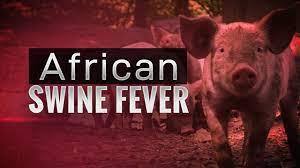

African swine fever is spreading at an “alarming pace” in Europe, particularly in the east of the continent, where the outbreak of the disease, a disease harmless to humans but highly contagious among animals, has raised fears of a wider spread of the virus.
“The number of cases and areas newly affected by the disease is increasing despite efforts to combat it, and countries are facing great difficulty in controlling and eliminating the disease,” Gregorio Torres, head of the scientific department at the World Organization for Animal Health, said in response to AFP’s questions.
Since the beginning of the year, there have been 285 African swine fever outbreaks on European farms, with the World Organization for Animal Health (OIE) recording nearly 71,000 cases as of September 1.
The virus spreads mainly in the eastern part of the continent, in Romania (197 foci), Moldova and western Russia, where five new outbreaks were discovered on farms last week.
The disease also appeared in Italy, on a farm in the metropolitan area of Rome in early June, and in Germany in May and then in July, with outbreaks twice in the states of Mecklenburg-West Pomerania and Lower Saxony (North). Nearly 2,800 farm animals were slaughtered.
Despite their geographical proximity to the centers of the outbreak, France and the Netherlands have so far escaped this infection.
Because there are no cures, African swine fever has a generally fatal effect on animals, and usually leads farm owners to slaughter animals preemptively to prevent further spread of infection.
In this sense, this fever poses a constant threat to the pork industry in Europe, “which is the world’s number one exporter of pork and pork products in the world, as the continent exports nearly 5 million tons annually”, as confirmed by the European Food Safety Authority at the end of July.
Faced with a prevalence described as “alarming”, the agency launched its third outreach campaign this summer with the authorities of 18 European countries, to spread awareness among breeders, veterinarians and fishermen about the way the disease is spreading.
The World Organization for Animal Health, which is responsible for coordinating countries’ efforts to combat this type of epidemic, is monitoring the situation, especially in Ukraine, where two foci of this fever appeared in livestock sites in June, then a third focus in July.
Torres pointed out that the Russian invasion of Ukraine in February caused the displacement of large numbers of people, and forced herders to abandon their animals and cut off roads for veterinarians, which encourages the spread of diseases.
contaminated food
African swine fever, endemic to sub-Saharan Africa, infects pigs of all kinds. The virus is not transmitted to humans, and it can live for more than two months in fresh and cured meat from infected animals.
The virus usually kills quickly on the farm where it spreads, and veterinary authorities have to ensure strict quarantine and cull the animals.
African swine fever reached Europe in the 1960s and was then wiped out, and returned there in 2007 via Georgia, according to the World Organization for Animal Health. The organization, which is active on all continents, describes this virus as a “global threat”, as 564 foci of it have been discovered since January.
The vast majority of the 78,000 reported cases occurred in Europe, and then to a lesser extent in Asia.
This highly contagious virus can be transmitted from one country to another by “infected food or by a contaminated vector, such as a salami sandwich,” for example, according to Gregorio Torres.
The virus can actually live for weeks in contaminated sandwich packages, and if that package is dumped, for example, in a highway service area, it can be inhaled by wild boars, which spread it on the move, on infrastructure such as railways or at service stations.
Among the 39 affected countries since 2020, some of them succeeded in eliminating the virus after making great efforts, such as Belgium or the Czech Republic.
In early June, Vietnam announced that it had succeeded for the first time in developing a vaccine against African swine fever, in partnership with American researchers. The country will initially limit this vaccine to its domestic market.
“It will be a good tool, but it is not the only solution,” said Gregorio Torres, adding, “We must improve international coordination, biosecurity, strengthen the veterinary capacities of countries and continue prevention with breeders.”





